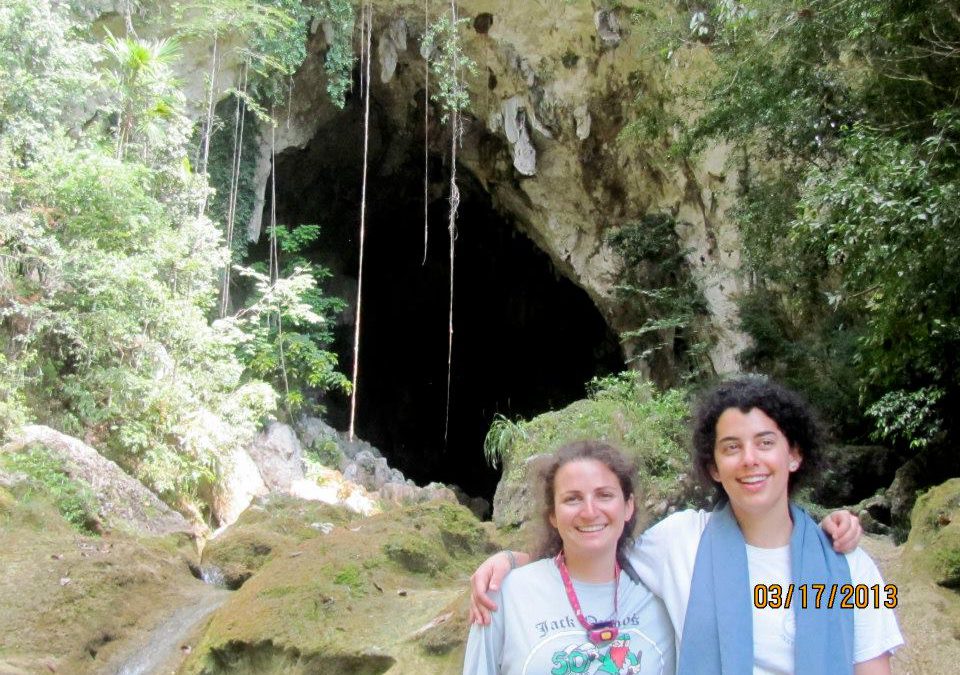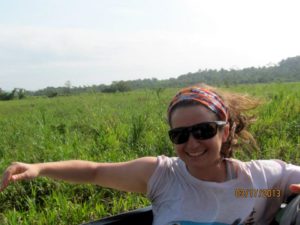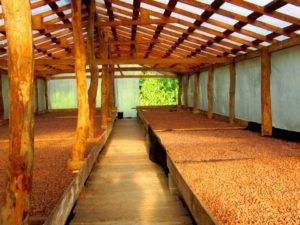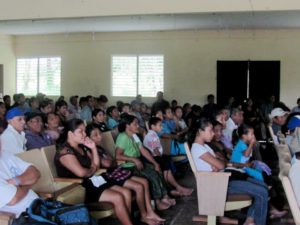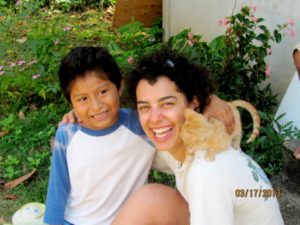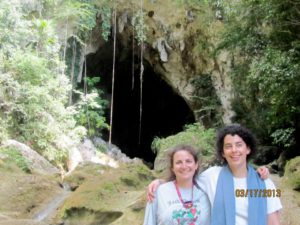By Melanie Yemma
As a senior in college, I wanted to take advantage of my last spring break. I’ve enjoyed previous years of backpacking through Utah, road tripping up and down the California Coast, and skiing my heart out. But, this year, I wanted to do something different. After returning from studying abroad in Thailand a year and a half ago, I spent a full year in Colorado Springs: working, studying, and exploring the West. While I really enjoyed my year of adventures in Colorado, my inner travel bug began to grow, and I yearned to explore someplace new during my last Spring Break.
Before graduating I also wanted to take advantage of a unique Grant program that Colorado College offers: Venture Grants. Any student can apply for a venture grant, which will award up to $1,000 dollars for an individual or group research project. Students have used these grants for everything, from lab materials to world exploration. My friend Sarah Perez-Sanz and I knew that we didn’t want to graduate without taking advantage of this amazing opportunity, so we decided to apply for a venture grant to research something that we truly love, to do something that we would probably never have the opportunity to do post-college. So this past week, we applied, received, and set out to learn about the commodity line of Chocolate in Belize, as we are both self-proclaimed chocoholics.
Our plan was to conduct a project that would tell the story behind the label of a chocolate bar. Not only did I think this would be interesting, but I also thought that it would maybe help curb my indecisiveness when it comes to the infinite variety of choices in the specialty chocolate aisle of the grocery store. Belize seemed like the perfect destination as it has a small but budding cacao industry, as well as an interesting Mayan cacao history.
We prepared for our trip by coming into contact with one Belize-based cacao sourcing company, Maya Mountain Cacao (MMC) as well as the Ya’axche conservation trust that works with Cacao Farmers and are both located in the southern-most region of Belize, the Toledo District. We researched (and taste-tested) many different craft chocolate makers who source some of its cacao from Belize, including Taza Chocolate and Green & Black Chocolate. And we set up a home stay with a Mayan cacao farmer for part of the trip
Lucky for us, Spring break fell at a convenient time; MMC was having it’s annual farmer’s meeting which we were asked to help out at, and many famed U.S. chocolate higher-ups, including Alex Whitmore, the founder of Taza Chocolate, was in town for the event. We decided to add in some other activities to our itinerary as well, so we could balance our time in the jungles and on the farms with the beach, so we arranged to spend the last few days of the trip on the beach in Hopkins village, where thanks to an awesome Taking The Kids connection (thanks mom!!), we are able to arrange for a day of scuba diving and snorkeling at Hamanasi Resort.
We spent the first half of our trip down in southern Belize. We started in Punta Gorda, where MMC is located, and where a Belizean chocolate company, Cotton Tree Chocolate, has its small factory. Cotton Tree Chocolate is also affiliated with the Chocolate Tree Lodge, which hosts Taza’s annual Chocolate Week which offers a wide variety of chocotourism excursions for true chocoholics. At Cotton Tree we learned how chocolate is made, and at MMC’s office we prepared for the annual farmers meeting.
The next step was to travel slightly north to the small town of Elridge, where the MMC annual farmers meeting was taking place. We conducted interviews and surveys with the farmers, passed out free chocolate samples, and listened to many different farmers as well as chocolate-higher-ups from the U.S. speak about the cacao industry in Belize. We spent that night celebrating the success of the meeting with MMC, where we inquired more about their work. I could honestly say that I learned more from talking to Alex Whitmore, the founder of Taza Chocolate, while on a floating raft in the Moho River, than I have from most of my textbooks. That night we crashed on the floor of MMC’s Cacao House, where they ferment and dry the cacao that their farmers sell them. The smell of the fermenting cacao and the loud screams from the howler monkeys made for a great night’s sleep.
Next up was the village of Blue Creek, where we arranged for a home stay with Mr. Silvano Sho, who is a Mayan cacao farmer as well as medicinal man, shaman, tour guide, and cave explorer. From swimming in the dark abyss of the Blue Creek Cave, to touring his cacao plot, to chatting and story telling over homemade tamales and tortillas, we are able to get a brief snapshot of life as a cacao farmer in Southern Belize. Staying with Mr. Sho was a true pleasure, and he offers many tour guiding services that anyone can take advantage of. Wouldn’t you want to swim in the Blue Creek cave with its original discoverer? If you’re interested in visiting Blue Creek you can reach Mr. Sho at Silvanosho@gmail.com.
Next up was the Ya’axche Conservation Trust’s Golden Stream Field Station, where Ya’axche’s agroforestry extension officer, Kenny Cal, offered to tour us around to some different cacao farms, while teaching us about how Ya’axche works with farmers. To get to Ya’axche, we had to wake up at 5 a.m. to catch a multitude of rides and buses to travel slightly farther north, but the beauty of the field station along with the sweet sounds of tropical birds, and a fresh cup of instant coffee kept us awake to learn all about their work.
Ya’axche oversees many different national reserves throughout Belize, and they work on all sorts of initiatives including forest conservation, environmental education, community development, and sustainable agriculture. They work with many farmers on developing diverse agro-forestry plots that provide benefits to their homes, as well as grow cacao, avocado, coffee, vanilla, and many more seedlings that they sell to farmers at reduced prices. They do other agriculture work from encouraging backyard gardening to encourage the Maya to diversify (without drastically changing) their diet, which used to only consist of corn, and they provide assistance and consultations for farmers. Ya’axche also offers many opportunities for visitors to Belize, especially a unique “Ranger for a day” program. By participating in this program you can help the rangers write their daily wildlife logs, and learn how to identify many different species in the reserve, from jaguar tracks to toucan calls. Working with Ya’axche is a great way to add an educational twist to your vacation while giving back. More information about Ya’axche can be found at their website: http://www.yaaxche.org/
After Ya’axche is was time for the beach. We traveled northward to Hopkins, where we spent two nights right on the Beach at Jungle Jeanie By the Sea, which has very affordable beach-front cabanas. We enjoyed the sunshine while reflecting and discussing our choco-experiences and piecing together the information we had gathered. We tried out some of the local Garufina dishes including Hudutu, which is a delicious coconut fish stew that is served with mashed plantains, and we refreshed our minds from the sun with some nice cold Belizean Bellikin Beers.
Right down the beach from Jungle Jeanie’s was Hamanasi Dive and Adventure Resort, where we went to go on a scuba diving and snorkeling excursion for one day, as well as check out their on-site garden that produces some of the food for their restaurant. Hamanasi was beautiful, and all of the guests there seemed to really appreciate its beauty and its hospitality. “We really lucked out with this place,” one guest mentioned to me on the Dive Boat. I set out on the dive boat, and Sarah went on the snorkel boat. We traveled out to South Water Caye and enjoyed diving some beautiful reefs and snacking on fresh pineapple and watermelon. It was paradise.
Upon returning to the resort, we checked out their farm-to-table garden. They were growing all sorts of things from pineapples and papayas, to lettuces, broccoli, cabbage, basil, and mint. According to Martin, one of the Dive Masters, the garden provides about 50% of the food to the resort’s restaurant. They also have a large compost system where all of the food scraps from the restaurant are composted and then used in the garden. Spending the day at Hamanasi was great, and while it was not within our poor college student budget to stay there, I would definitely recommend checking it out. In addition to specializing in diving and snorkeling excursions, they also offer many inland excursions from cave and river tubing to exploring Mayan ruins.
We were able to pack a lot into our trip to Belize as we learned a lot while having ample time to soak up the sun (and unfortunately, the mosquitoes). While I advocate exploring the beautiful and diverse country of Belize, what I suggest even more is to consider traveling with an objective or purpose. Our chocolate research project really set an amazing back-story to fill our time with. Even if there is no paper due (although we will do a presentation about our project), researching is fun, especially if it is to learn more about something that you encounter in everyday life, for example, chocolate!
“I’m going to travel like this from now on!” Sarah exclaimed, while she was receiving exciting emails from MMC and Ya’axche about fun things to do during our trip. Not only do I feel like I truly took advantage of my last spring break in College, but I also made it educational…aren’t you proud Mom and Dad? (Editor’s note: YES MEL!) After being one of the kids in Taking The Kids for most of my life, I learned many lessons for my current travels where I take myself, and I hope to include more interesting educational experiences into my travels in the future, even if its post-grad.

